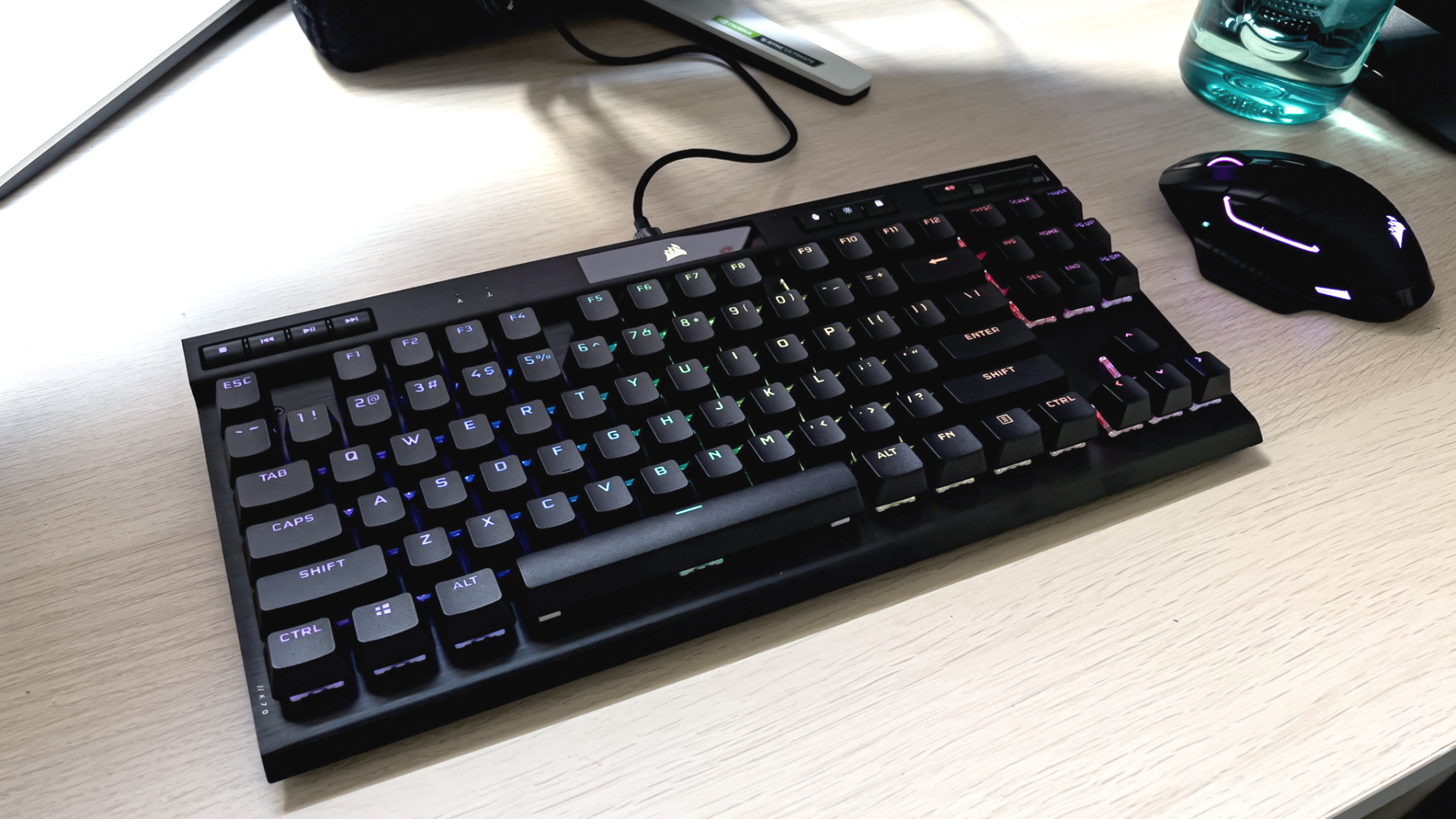Our Verdict
The K70 TKL is excellently built for durability and speed thanks to Corsair's new OPX switches, 8K polling, and a handy-dandy media bar.
For
- Exceptional build
- Speedy optical Mechanical Switches
- Excellent media controls
Against
- Dull RGB
- Big for a TKL
PC Gamer's got your back
The Corsair K70 RGB TKL Champion Series Optical-Mechanical Gaming Keyboard is one helluva long name for a keyboard, so for the sake of saving my wrists from carpal tunnel, we’ll refer to it as the K70 OPX henceforth. This board isn’t new but rather an iteration of the same released back in 2021 only now available with Corsair’s shiny OPX Optical-Mechanical switches. These are the same switches that can be found on the Corsair K100, our favorite gaming keyboard.
Retailing for $150, the K70 OPX costs $10 more than other K70 variants that have more pedestrian Cherry MX switches. Whether that premium is worth it to you will squarely depend on the kind of switches you prefer. Essentially, the OPX switch is a linear switch designed for speed and fluidity. It boasts a 1mm actuation distance with zero debounce. For reference, Cherry MX Reds actuate around 1.8mm.
All this means is that they are really fast, smooth, and clacky though not offensively so. Corsair says the new switch is far more reliable and guarantees a whopping 150 million keystrokes before any failure or degradation in performance. That’s figuratively quite impressive but ultimately meaningless since none of us are actually counting. What really matters though is that they feel superb when gaming.
I can say that playing Crucible in Destiny 2 was a breeze as all my frantic side-stepping, jumping, and sliding were registered without a hitch. It’s debatable whether you will notice the difference between a 1mm and 1.8mm actuation distance because I certainly couldn’t. Typing on the other hand wasn’t quite as pleasant, although I’m not sure if that had more to do with the size and shape of the PBT caps than the switches themselves. The clackety-clack is far less annoying than on some other boards, at least.
The K70 OPX is a fantastically put-together board. The whole thing is designed to withstand the rigors of the esports tournament scene, and it shows. The all-black chassis is built from lightweight aluminum that looks and feels very nice.
It’s a TKL configuration, meaning you lose the numpad but gain a smaller, more portable board. The slightly rough PBT caps are non-slip and won’t fade with age. The keys are all individually backlit but even at the brightest, the lighting comes off as somewhat pastel-like and washed out compared to a Razer board. It just looks weird to me, and I’m not a fan.
There’s plenty of customization here with up to 20 layers of lighting effects which you can set in the Corsair iCUE software suite. The suite also allows for lighting integrations with other Corsair products like the Dark Core RGB Pro SE wireless mouse and even several popular games. iCUE also gives you finer control over the polling rate, custom key bindings, and profiles—50 of which can be saved to the keyboard's 8MB storage.
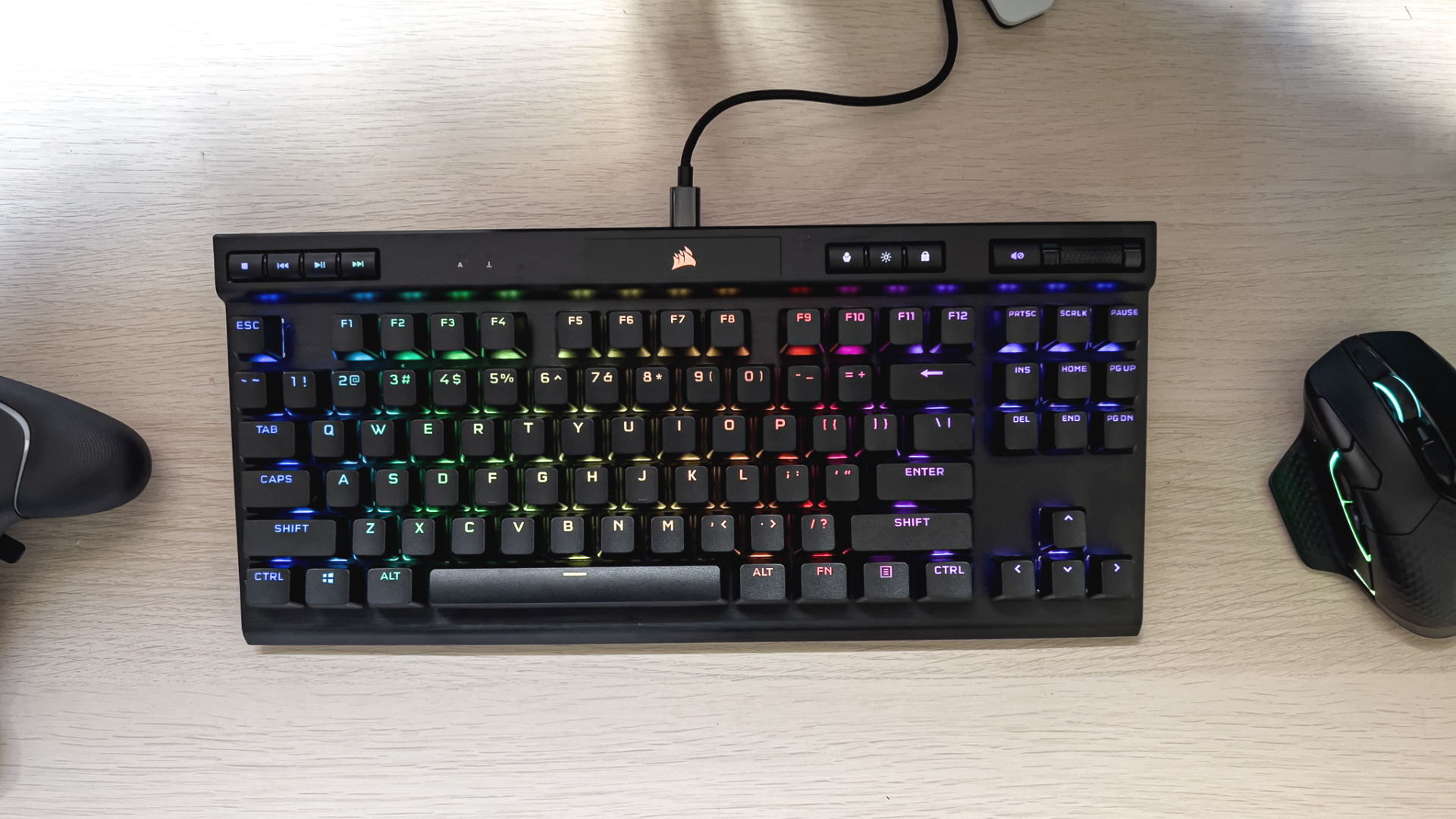
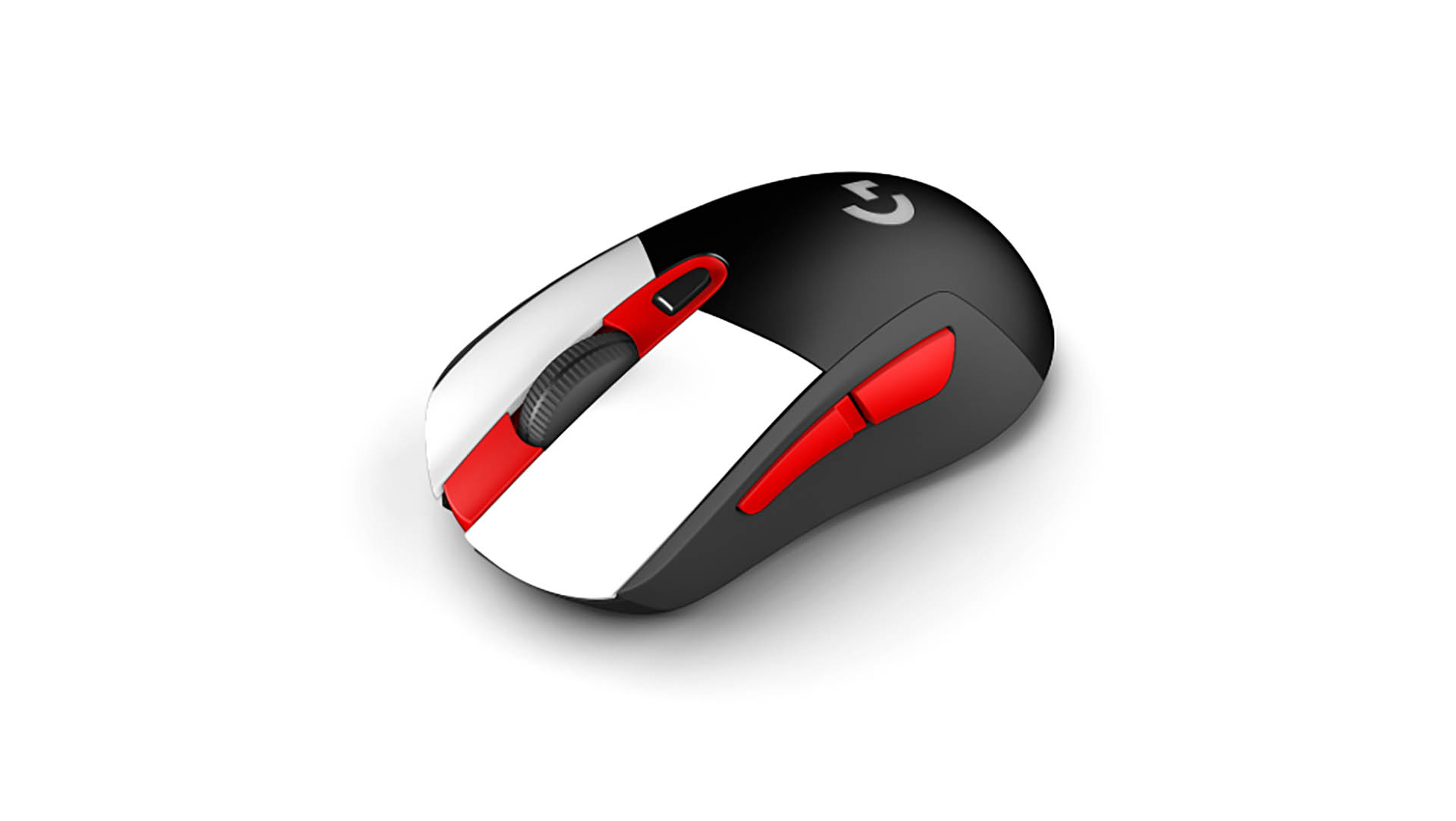
Best gaming mouse: the top rodents for gaming
Best gaming keyboard: your PC's best friend...
Best gaming headset: don't ignore in-game audio
At the top of the board is a raised section dedicated to media controls and quick profile settings. I absolutely love the media bar with its diamond-textured aluminum volume dial and playback buttons on the left-hand side. These work flawlessly in both Windows PC and Apple computers.
An odd design choice is the center panel that I really think should be an LED display but alas, only shows an illuminated Corsair logo. The quick profile buttons let you change stored profiles, lighting, and lock the Windows Start key, so you don’t tab out of your sweaty game.
The board connects via a removable USB Type-C cable and Corsair provides a very handsome and sturdy braided USB Type-C to Type-A cable but you can pretty much use any you have lying around. Next to the USB port is the Tournament switch, a toggle that disables all custom macros and distracting lighting profiles—presumably something esports pros need when in a tournament.

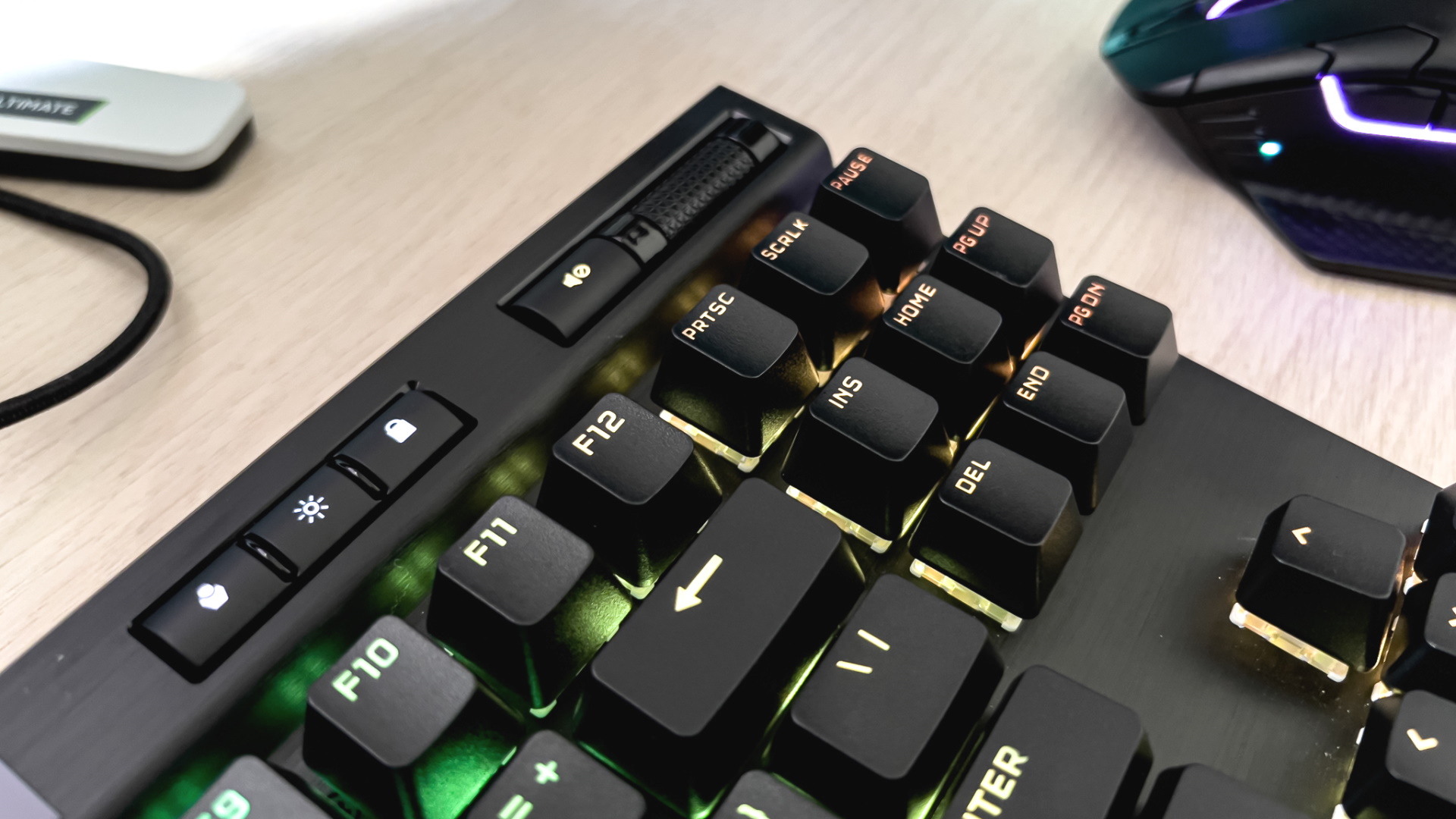
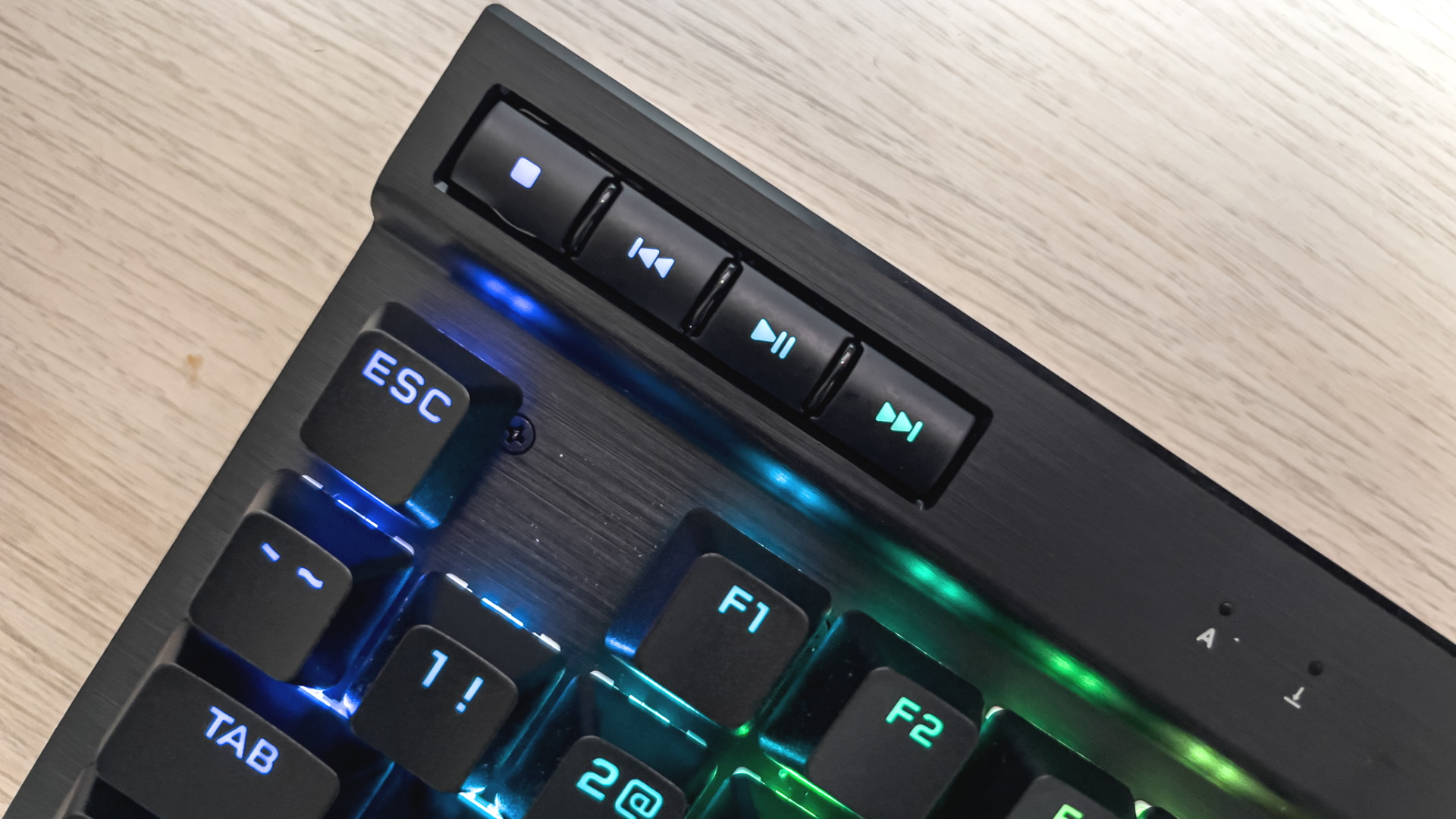
The K70 OPX also comes with Corsair’s AXON Hyper polling tech which gives it an impressive 8,000Hz polling rate. This again is something mere mortals won’t be able to discern in the real world but comparatively speaking, it means the K70 OPX has a 0.25ms response while some of the best boards only manage 2ms. Combine that with the uber-fast OPX switches, and you have no excuse for your poor K/D ratio except that you ain't gud!
The K70 RGB TKL Champion Series OPX is an excellent gaming keyboard that should please more than just the esports players Corsair is aiming it at. I found using this every day for work and pleasure a joy to use. The new OPX switches are fascinating on paper although, in practice, I’m not totally convinced they warrant the $10 premium. However, if you want speed and excellent media controls in a handsome chassis, then you won’t be disappointed with this board.
The K70 TKL is excellently built for durability and speed thanks to Corsair's new OPX switches, 8K polling, and a handy-dandy media bar.
Kizzy is the consummate geek, with black turtleneck design sensibilities, always on the hunt for the latest, greatest, and sexiest tech. He's played Doom on the OG Pentium and still remembers how to hack a dial-a-phone. After four decades of being crazy about tech, he's literally just getting started. It's the age of the geek, baby!
